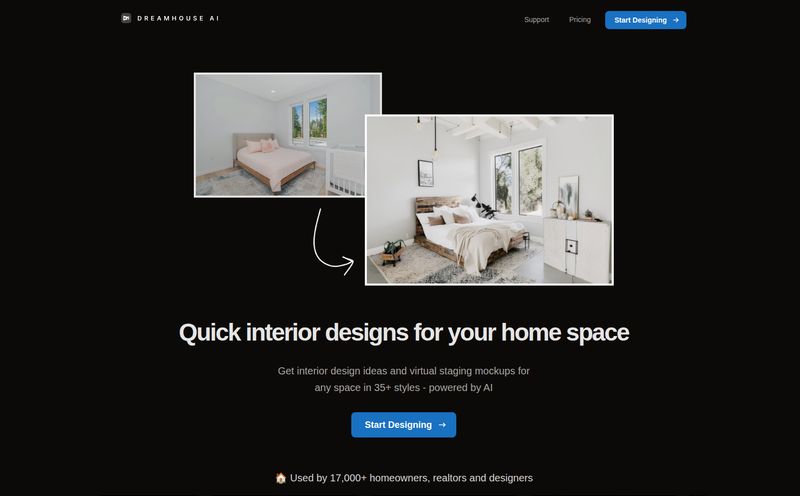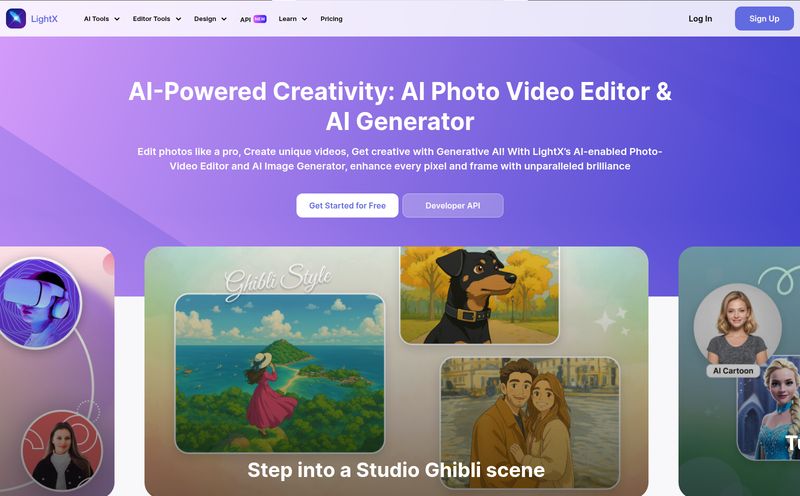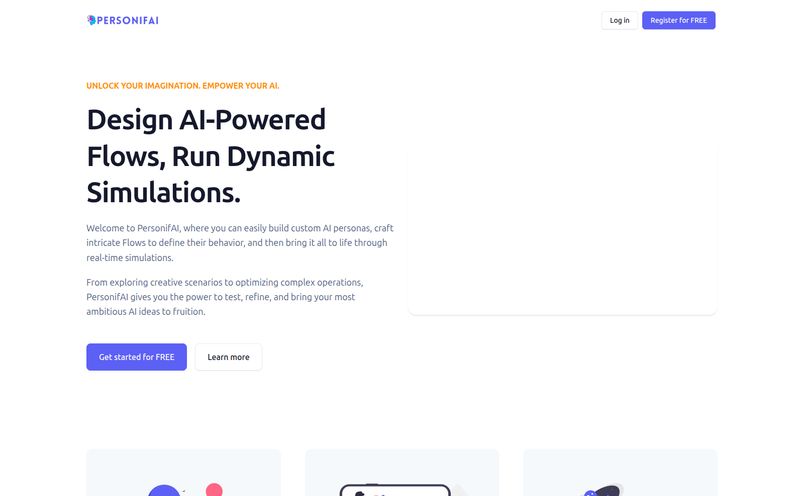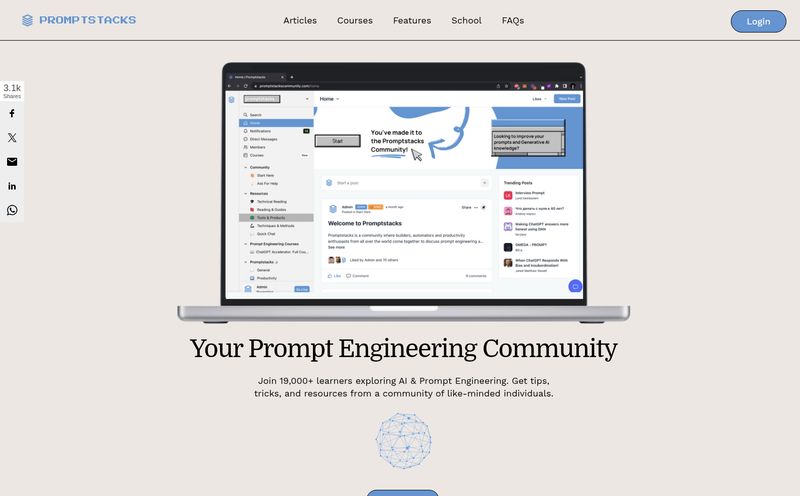Most of us have creative ideas trapped in our heads. We can see the perfect logo, the ideal blog post illustration, or that quirky character for a side project. The problem? Getting it out. My own drawing skills peaked somewhere around drawing lopsided suns in the corner of the page. So when I see a tool that promises to turn my clumsy sketches into “professional designs in minutes,” my inner skeptic and my hopeful creative get into a fistfight.
I’ve been in the SEO and digital content game for years, and I’ve seen a million and one ‘revolutionary’ AI tools. Most of them are… fine. They do a job. But every now and then, something comes along that genuinely changes my workflow. So, I spent some time with Sketcho.io, and I’m ready to report back from the front lines of AI-assisted creativity. Is it the real deal?
What Exactly Is Sketcho AI?
Okay, let's break it down. Sketcho isn’t trying to be another Midjourney or DALL-E where you're just wrestling with text prompts to get what you want. We’ve all been there, right? Typing “a majestic cat sitting on a pile of books in the style of Van Gogh, but happy” and getting back a six-legged Lovecraftian horror.
Sketcho takes a different, and dare I say, more intuitive approach. It’s a sketch-to-image platform. You draw a basic shape, a crude outline of your idea, and then you pair it with a text prompt. The AI, built on the powerful Stable Diffusion model, uses your sketch as a structural guide and your prompt as a stylistic one. It’s less like commanding a robot and more like collaborating with a muse who just happens to be a super-fast algorithm.
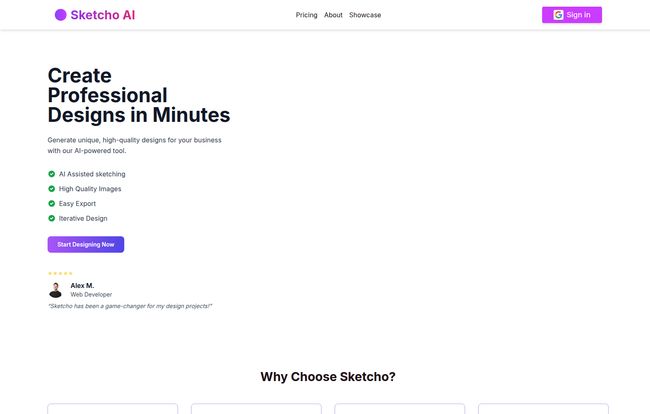
Visit Sketcho.io
How Sketcho Turns Your Scribbles into Art
The process is refreshingly straightforward. The website breaks it down into four steps, and for once, the marketing fluff actually matches reality. It really is this simple.
Step 1: Your Humble Sketch
You start with a canvas. This part uses the Excalidraw editor, which is a fantastic choice. It feels like a souped-up digital whiteboard. You don’t need a fancy stylus or a graphics tablet; your mouse is perfectly fine. I just sketched a rough outline of a coffee cup with some steam coming off it. We're talking cave-painting level of detail here.
Step 2: Describe Your Vision
This is where you add the flavor. Next to your sketch, you write a text prompt. For my lumpy cup, I wrote something like, “A cozy ceramic mug of coffee, steaming, on a rustic wooden table, morning light, photorealistic.” This tells the AI what kind of coffee cup you want it to be.
Step 3: Generate and Iterate
You hit the button and wait a few seconds. And then… boom. Sketcho spits out a few variations of your idea. My clumsy circle became a beautiful, textured ceramic mug. The squiggly lines I drew for steam became soft, ethereal vapor. It wasn’t just a random AI photo of a mug; it was my mug, with the composition I had laid out.
And here's the best part: the iteration. Don’t like the handle? Go back to the sketch, tweak it, and generate again. Want to add a saucer? Draw a quick oval underneath and re-run it. This back-and-forth process is where the real magic happens. It’s a creative conversation.
My Experience: The Good, The Bad, and The AI
No tool is perfect, and Sketcho is no exception. After generating everything from logos to landscapes, here's my unfiltered take.
The good stuff is immediately obvious. It's incredibly easy to use. If you can use MS Paint, you can use Sketcho. The iterative design process is addictive and genuinely useful for refining an idea. I found myself getting much closer to the image in my head than I often do with pure text-to-image generators. As Alex M., a Web Developer quoted on their site, puts it,
Sketcho has been a game-changer for my design projects.
And I get it. It removes the friction.
Now for the reality check. The quality of your output is directly tied to the quality of your input. This is true for all AI, but it's very literal here. If your sketch is a confusing mess and your prompt is vague, the AI will give you a beautifully rendered, high-resolution confusing mess. It’s not a mind reader. You have to give it some direction. Also, to really get cooking and make unlimited images, you're going to need a subscription. The free ride only lasts for so long.
Who Should Actually Use Sketcho.io?
So, who is this for? Is it for serious artists? Maybe. Is it for total beginners? Definitely. I see a few key groups getting a ton of value out of this:
- Designers and Developers: People like Charles S. and Pete E. from the testimonials. Need a quick mockup for a UI element, a custom icon, or some inspiration for a 3D model? This is ridiculously fast. It's a great tool for visual brainstorming.
- Content Creators and Marketers: I fall into this camp. Need a unique hero image for a blog post? Or a visual concept for an ad campaign? Sketcho can get you 90% of the way there in minutes, without you having to trawl through stock photo sites for an hour.
- Hobbyists and the Creatively Curious: If you just like the idea of bringing your daydreams to life, this is a fantastic and accessible playground. It's just plain fun to see how the AI interprets your doodles. It feels a bit like having a superpower.
Let's Talk Money: Sketcho Pricing
Alright, the all-important question: what's the damage? Sketcho's pricing is, thankfully, very simple. There are no confusing credit packs or tiered feature lists. You're either on the free plan (with limitations) or you're a Pro.
| Plan | Price | Key Features |
|---|---|---|
| Sketcho Pro Monthly | $5 / month | Unlimited images, unlimited downloads, high-quality output. |
| Sketcho Pro Yearly | $50 / year | Same as monthly, but you save $10. |
At $5 a month, it's cheaper than a fancy cup of coffee. For the power it gives you, I'd say that's a pretty compelling offer. It’s a low barrier to entry for unlimited creative potential.
So, Is Sketcho Worth It? My Final Verdict
After all the sketching, prompting, and generating, I’m genuinely impressed. Sketcho.io has found a sweet spot. It successfully bridges the gap between the blank-canvas intimidation of pure text-to-image AI and the skill requirement of traditional digital art. It gives you more control than just typing words, but it doesnt require you to be a digital painter.
It's not going to put professional illustrators out of a job. But for the rest of us—the marketers, the developers, the dreamers with shaky hands—it’s an amazing co-pilot. It’s a tool that doesn’t just generate images; it helps you think visually. And for five bucks, that’s one of the best deals in the creative AI space right now. I've already used it for a couple of blog banners, and I have a feeling it's going to become a regular part of my toolkit.
Frequently Asked Questions about Sketcho
Do I need any technical design experience to use Sketcho?
Absolutely not. That's kind of the whole point. If you can draw a circle and a square with your mouse, you have all the technical skill you need to get started. The AI does all the heavy lifting for you.
What's the difference between this and other AI generators?
The main difference is the sketch-first approach. Most AI tools rely only on text prompts. Sketcho uses your drawing as a compositional guide, which gives you much more direct control over the structure and layout of the final image.
Can I use the images I create for commercial projects?
Based on their FAQ, you can use the generated logos and designs for commercial use. As always with AI-generated content, it's a good idea to check the most current terms of service on their site, as this landscape is always changing.
Is it easy to cancel the subscription?
Yes, the website states it's possible to keep using Sketcho after canceling a subscription. Since payments are handled by Stripe, management is typically straightforward through their customer portal.
What file formats can I download my designs in?
The platform allows you to export your final designs in high-resolution formats suitable for web and print projects. This typically includes standard image files like PNG or JPG.
